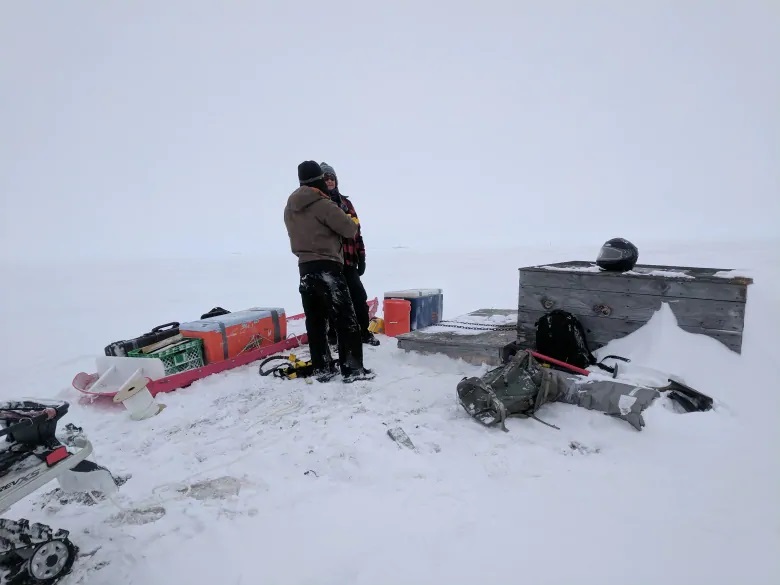Super salty water in northern Alaska helping scientists learn about conditions for life in space

New Arctic research is offering something different to ponder when stargazing at celestial bodies. It points to a possible connection between life on other planets and ancient saltwater trapped in Alaska’s permafrost.
A team of researchers from the University of Washington studied microbes and their viruses in an Alaskan cryopeg — a layer of water in permafrost so salty it doesn’t freeze, even below zero degrees. They presented their findings in June at AbSciCon, an astrobiology conference in Bellevue, Wash.
Zac Cooper, a PhD student in oceanography and astrobiology, said cryopegs may be similar to cold, salty water found below the surface of Mars and in the icy shells of moons around Jupiter and Saturn.
“It’s really pushing the boundary of where stuff can find a way to live,” he said of the research, adding he’s also studied organisms that grow in the hottest water temperatures on Earth, as well as the coldest.

“Just finding life that can persist at this very bizarre boundary of conditions is really interesting.”
‘That’s a lot of salt’
In this case, brine samples from the cryopeg, which scientists believe have been isolated for 50,000 years, were 14 per cent salt. By comparison, seawater is only about 3.5 per cent salt.
“That’s a lot of salt,” Cooper said.
“That’s pretty difficult for most things to live in because the more salt there is in a solution the less of the water is actually available for drinking or for use by the organisms living inside of it.”

While it’s not fully known how cryopegs form, Cooper said researchers think it was 100,000 years ago when glaciers formed in coastal areas and the sea level dropped, exposing sea floor sediment and saltwater. He explained they believe the sediment then froze, concentrating the salt and pushing it into liquid layers that were buried as permafrost and continued to build over thousands of years.
Cooper said this theory is supported by microbes found in the brine samples, which are similar to those found in the ocean today.
“It’s not surprising necessarily but it’s validating to see that our hypothesis matches some of our findings.”
Cooper said the findings are also important to share with Indigenous people in Arctic regions who refrigerate meat in natural ice cellars dug into the permafrost.
As the climate warms, he explained, cryopegs can move up through the permafrost into these cellars. While he stressed the bacteria and viruses in the saltwater are likely not harmful to humans, they can break down organic-rich substances.
“If these brines come into contact with whale meat, the bacteria that are in there will see this as a new food source and try to start breaking it down as rapidly as they can.”
The cryopeg that researchers studied is located outside Utqiagvik, Alaska — formerly known as Barrow — the United States’s northernmost city. The site was originally excavated by the U.S Army’s Cold Regions Research and Engineering Laboratory in the 1960s.
Cooper said from the surface, the site is “just a little wooden box” on top of the ground. But inside is a ladder leading down 3.6 metres to a thin, short, dark tunnel in the permafrost.

It was an “interesting challenge,” Cooper said, getting everyone in and out of the tunnel with researchers taking turns crouching and drilling into the permafrost in four- to eight-hour shifts.
“Climbing down for the first time is just kind of a bizarre kind of a shuffle and you have to be really tightly roped in for safety because it’s all icy and slippery,” he said.
“The first thing you see when you turn on your headlamp and start to look around are these beautiful, fragile, giant crystals of hoarfrost growing off of the ceiling … And they reflect light in just amazing sparkles.”
Related stories from around the North:
Canada: Fossil of world’s earliest fungus unearthed in Canadian Arctic, Radio Canada International
Greenland: Bizarre skull belongs to first known beluga-narwhal hybrid, CBC News
Russia: Scientists surprised to discover meteor exploded over Bering Sea in December, CBC News
United States: New map shows what Bering land bridge looked like 18,000 years ago, CBC News



